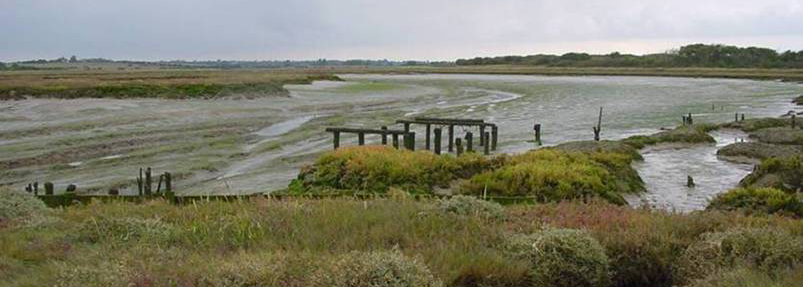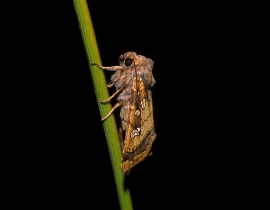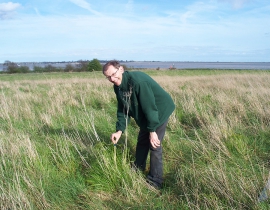Fisher’s Estuarine Moth Breeding Programme
Location: Colchester Zoo, Essex
Support started: April 2008
Species: Fisher’s Estuarine Moth
Mission: To provide a readily available supply of Fisher’s Estuarine Moths for introduction at newly-created sites to ensure the long-term survival of this species.
The Fisher’s Estuarine Moth is a British species of high conservation priority; with the current population at 25% below the favourable reference population size. As a result, the moth is legally protected under the Conservation of Habitats and Species Regulations 2010, is listed in the British Red Data Book and has an Essex Biodiversity Action Plan (BAP).
The moth is completely reliant on Hog’s Fennel as its sole larval food plant; a plant species which is also threatened. It is also reliant on long coarse grass species to fulfil its egg laying requirements. Favoured grasses for egg laying include Cock’s-foot and False oat-grass.
In the UK, Hog’s Fennel is limited to two main localities; the north Essex coast and the north Kent coast. Suitable habitat for the plant is dwindling, due to rising sea levels along the coast line, mowing of the plant and trampling by dog walkers.
In 2006, a project was set up to plant up a sustainable landscape-scale network of Hog’s fennel sites. Funding has been made available through Natural England’s Higher Level Stewardship Scheme to encourage farmers and landowners to create areas of habitat for the moth on their land as. The creation of habitat has to date involved planting over 38,000 Hog’s fennel plants such that 27 sites have been created along the Essex coast line.
In 2008, Colchester Zoo teamed up with Tendring District Council, Natural England and Writtle College to initiate the captive breeding programme for the Fisher’s Estuarine Moth at Colchester Zoo. This will enable the species to be established at the newly created sites of Hog’s fennel, without necessitating the translocation from naturally occurring sites where populations are relatively small and vulnerable. The breeding programme will thus provide a readily available supply of moths that will ensure the sustainability of the programme for the long-term.
Initially eggs for the breeding programme were collected under licence from Skipper’s Island Nature Reserve, an Essex Wildlife Trust site. 40 breeding cages were established in an off show location at Colchester Zoo and a Hog’s fennel plant and grass species were placed in each cage to fulfil the moth’s life history requirements. The caterpillars hatch in April and are immediately placed onto a Hog’s fennel plant, where they remain feeding throughout the summer until pupation. Adult moths then emerge in September and Colchester Zoo keepers ensure unrelated pairs are mixed for mating. Resulting eggs are then used for the following year’s captive breeding programme and any additional eggs are released into the newly created sites.
Since the release of the eggs into the wild, signs of caterpillars feeding and adult moths have been seen at the new sites. In addition to this work, surveys conducted by Tendring District Council have also shown that 21 of the 27 habitat creation sites had sightings of the moth’s caterpillar feeding signs or of adult moths in 2016, some of these had been populated by the breeding programme but many had been colonised by the moth naturally.
The moth is completely reliant on Hog’s Fennel as its sole larval food plant; a plant species which is also threatened. It is also reliant on long coarse grass species to fulfil its egg laying requirements. Favoured grasses for egg laying include Cock’s-foot and False oat-grass.
In the UK, Hog’s Fennel is limited to two main localities; the north Essex coast and the north Kent coast. Suitable habitat for the plant is dwindling, due to rising sea levels along the coast line, mowing of the plant and trampling by dog walkers.
In 2006, a project was set up to plant up a sustainable landscape-scale network of Hog’s fennel sites. Funding has been made available through Natural England’s Higher Level Stewardship Scheme to encourage farmers and landowners to create areas of habitat for the moth on their land as. The creation of habitat has to date involved planting over 38,000 Hog’s fennel plants such that 27 sites have been created along the Essex coast line.
In 2008, Colchester Zoo teamed up with Tendring District Council, Natural England and Writtle College to initiate the captive breeding programme for the Fisher’s Estuarine Moth at Colchester Zoo. This will enable the species to be established at the newly created sites of Hog’s fennel, without necessitating the translocation from naturally occurring sites where populations are relatively small and vulnerable. The breeding programme will thus provide a readily available supply of moths that will ensure the sustainability of the programme for the long-term.
Initially eggs for the breeding programme were collected under licence from Skipper’s Island Nature Reserve, an Essex Wildlife Trust site. 40 breeding cages were established in an off show location at Colchester Zoo and a Hog’s fennel plant and grass species were placed in each cage to fulfil the moth’s life history requirements. The caterpillars hatch in April and are immediately placed onto a Hog’s fennel plant, where they remain feeding throughout the summer until pupation. Adult moths then emerge in September and Colchester Zoo keepers ensure unrelated pairs are mixed for mating. Resulting eggs are then used for the following year’s captive breeding programme and any additional eggs are released into the newly created sites.
Since the release of the eggs into the wild, signs of caterpillars feeding and adult moths have been seen at the new sites. In addition to this work, surveys conducted by Tendring District Council have also shown that 21 of the 27 habitat creation sites had sightings of the moth’s caterpillar feeding signs or of adult moths in 2016, some of these had been populated by the breeding programme but many had been colonised by the moth naturally.
To continue to work towards securing the long-term future of the Fishers Estuarine Moth by establishing a sustainable network of populations away from the threats of rising sea-levels
- A.E.E.C.L The Lemur Conservation Association
- EAZA Elephant TAG (EEHV) Fund
- Elephant Orphanage Project (EOP)
- Free the Bears
- GhostFishing UK
- Galapagos Conservation Trust
- Komodo Survival Programme
- LWIRO Primate Rehabilitation Centre
- Orangutan Foundation
- Red Panda Network
- Save the Rhino International
- UmPhafa
- VulPro



